Top Local SEO Tools 2025: Boost Google Business Profile Ranking
Discover the best local SEO tools in 2025 to optimize your Google Business Profile, boost rankings, and attract local customers.
Mike | 29 Sep 2025
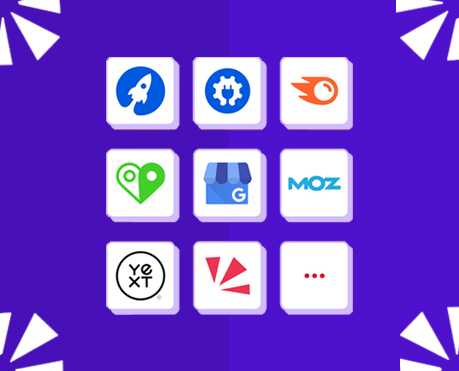
In 2025, the local SEO is no longer optional – it is necessary. Local intentions with more than half of mobile searches and “near me” questions arise every year, do not optimise risk losing customers with prepared-to-money. Whether you run into a cafe, boutique, service-based company, or multiple locations, your success can be defined by being displayed in local search results.
Local SEO helps to show your business when people search nearby, and the correct tools make it easier. From tracking Google Business Profile (GBP) management and ranking and optimising your site, these tools promote visibility, promote foot traffic, and increase revenue.
This guide covers the top 15 local SEO tools in 2025, their features, benefits, and tips to help them be ahead of the competitors and attract more local customers.
Why Local SEO Tools Matter in 2025
In 2025, local SEO tools will be required as AI-operated search, voice query, and Google updates continue to shape how people get business. These tools go beyond keyword tracking by managing reviews, adaptation of listing, analysing competitors, and revealing businesses in significant “near me” searches. The main benefits include high visibility on Google Maps and local packs, easy reputation management, competitive strategies in insight, better conversion from ready-to-buy local customers, and time savings through automation. They matter because optimised profiles and frequent reviews promote ranking, drive more foot traffic, form trust, and clear development provides cost-effective, long-term marketing results with insight.
Trends show that 75% of mobile local searches travel to a store within 24 hours, and as voice search usage increases, accuracy and reliability have become more important than ever. Local SEOs help manage several listings with accuracy, monitoring local keyword performance, monitoring reviews, and providing analytics proving ROIs and guiding intelligent business decisions.
Top 15 Best Local SEO Tools Every Small Business Should Use in 2025
1. Google Business Profile (GBP) Manager
There should be a tool for local SEO-your business appears in Google Maps and local search. You can update business details, manage reviews, share updates, and track insights such as calls and clicks.
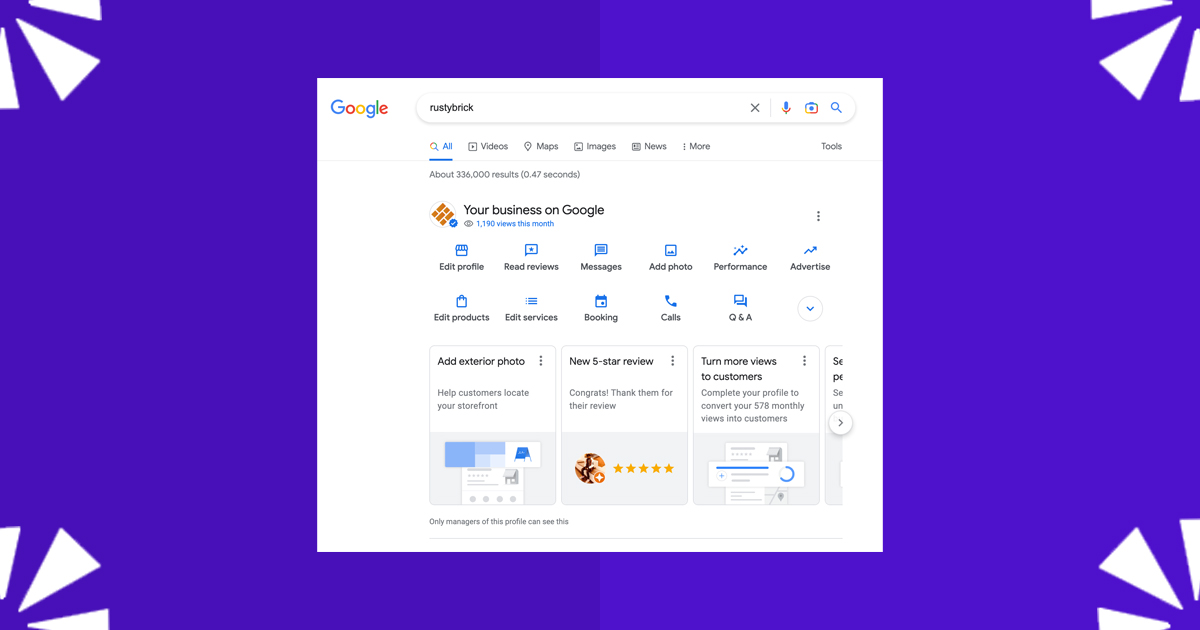
Benefits: Increased visibility, trust, and a higher number of customers.
Pro Tip: Keep your information accurate, post regularly, and respond promptly to reviews.
2. Moz Local
Moz Local is a listing management tool that keeps your commercial information accurate and consistent across directories. It syncs the NAP (name, address, phone) details with top platforms and data aggregators, alerts you about duplicate or inconsistent listings, and provides basic reputation management tools.
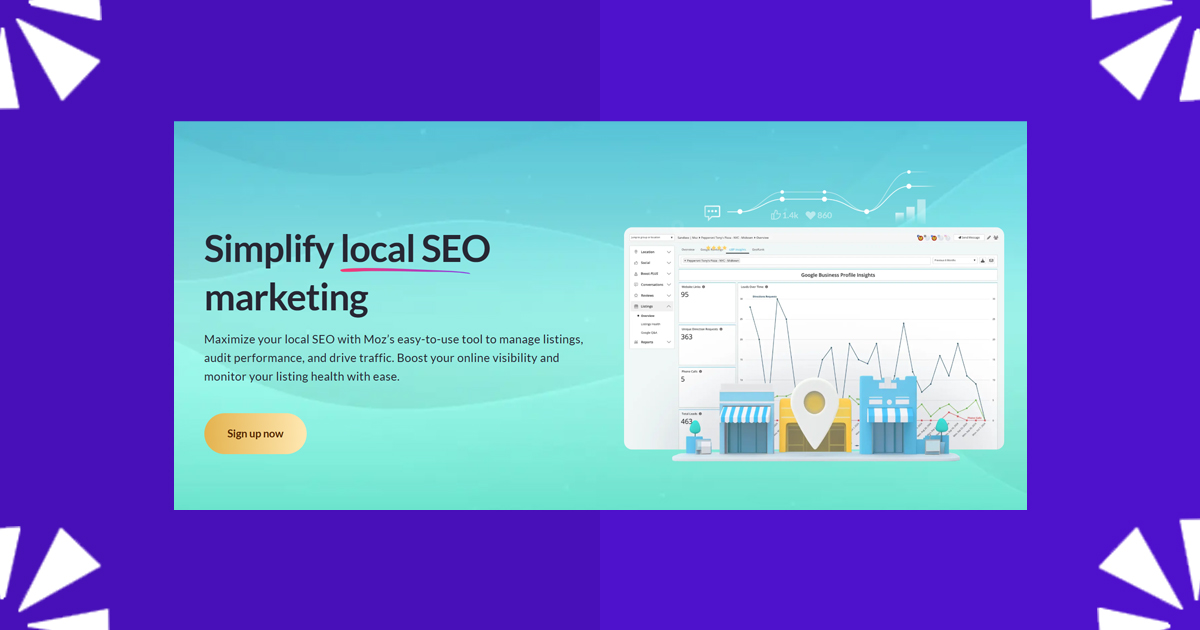
Best for: Multi-location Business that wants to save time and build confidence with the search engine.
3. BrightLocal
An all-in-one local SEO platform for rank tracking, citation building and reputation management. It offers local search grid tracking, GBP audit, and review monitoring – all in one dashboard.
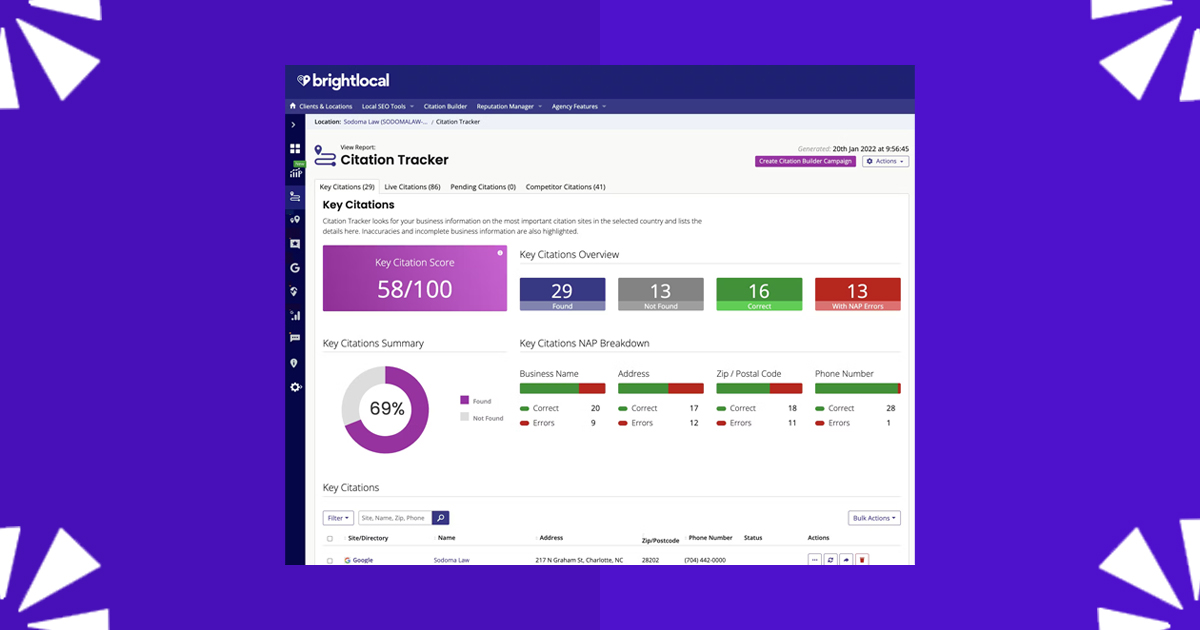
Best for: Agencies and businesses want accurate local ranking and easy review management.
Pro Tip: Use its review generation tools to request customer response via SMS or email.
4. Semrush Local SEO Toolkit
A powerful SEO platform with local features like keyword research, city/zip rank tracking, competitive analysis, listing management, and on-page audit.
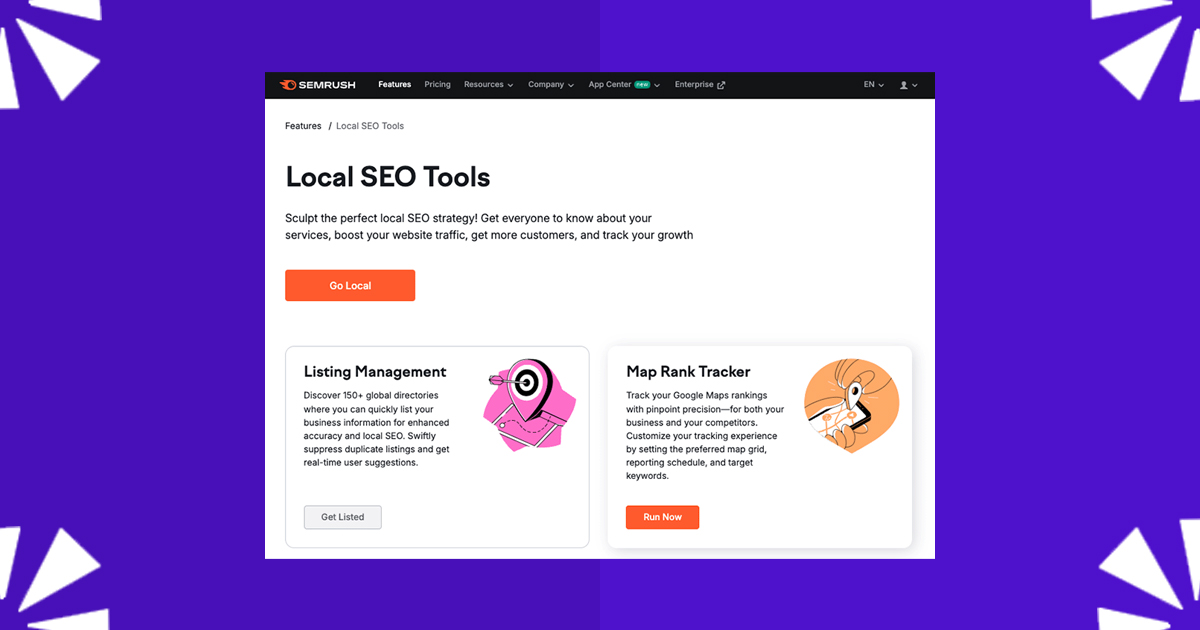
Best for: Business that wants both local SEOs and broader SEO strategies.
Pro Tip: Use the Listing Management Add-on to automate directory submission.
5. Whitespark
The best known for its local citation finding, helps WhiteSpark businesses create consistent, high-value citations, track local ranking and manage reputation.
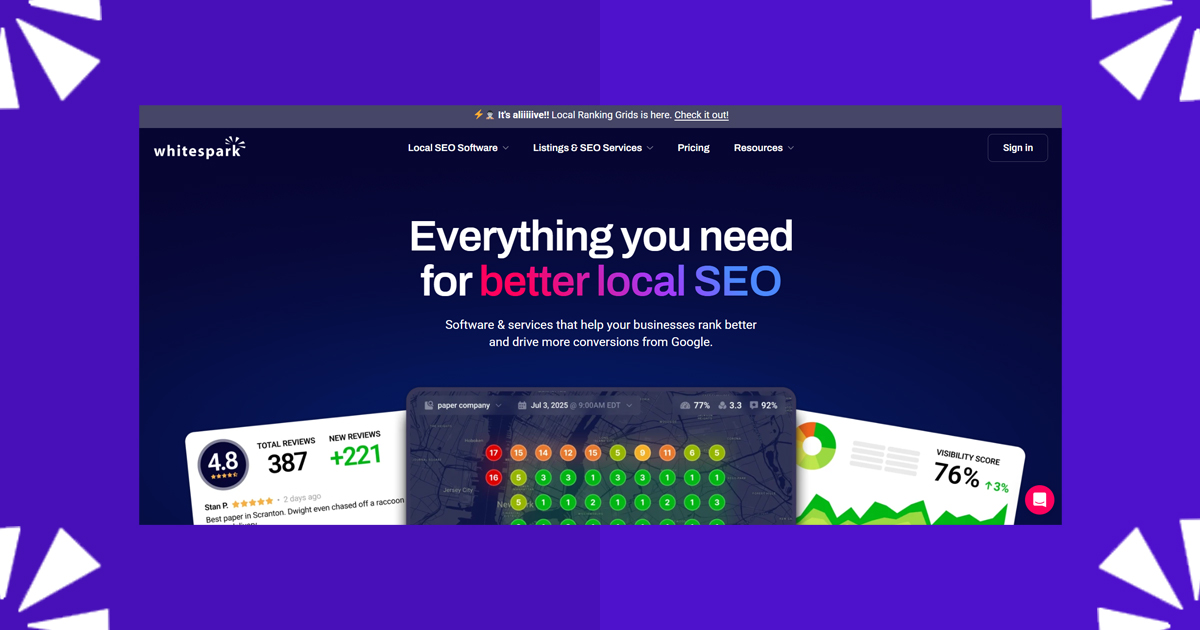
Benefit: Boosts local authority through niche-specific directories.
Pro Tip: Run a citation audit every quarter to stay ahead.
6. Yext
A premium tool for online appearance management that keeps your business information in accordance with 100+ platforms. It offers real-time listing updates, voice search optimisation, advanced analytics, and review monitoring.
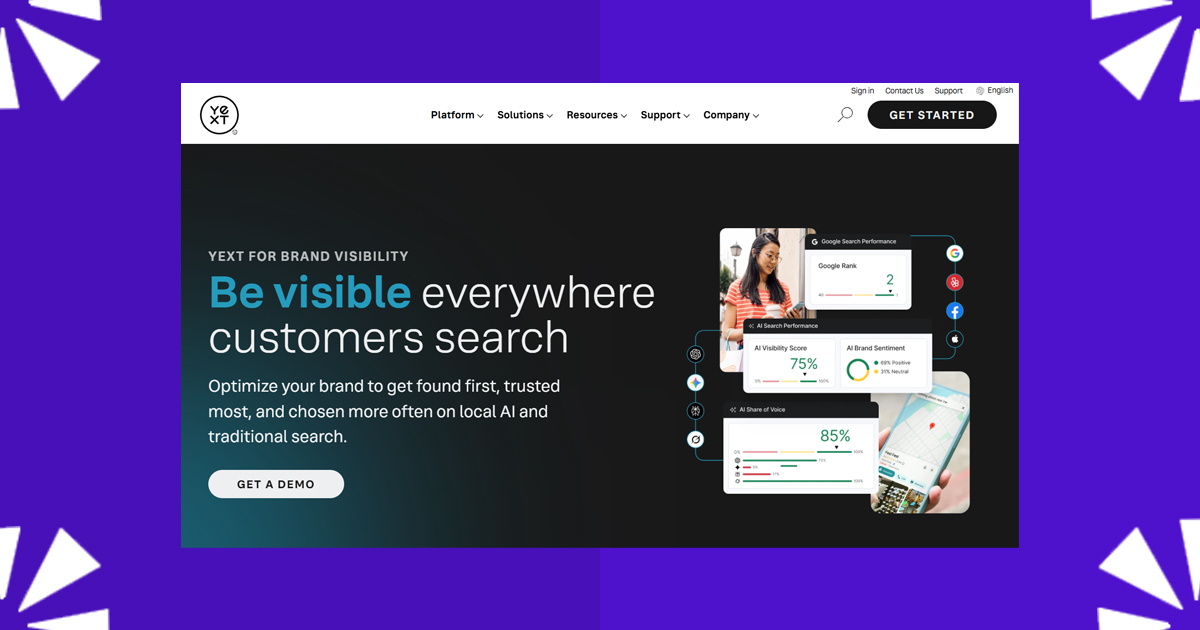
Best for: moderate to large businesses or franchisees.
Pro Tip: FAQ and customers use the AI Tool of Yext to handle the questions efficiently.
7. Ahrefs
Known for backlink analysis, Ahrefs also helps with local keyword research, competitive audit, and location-based rank tracking. This is great for finding local backlink opportunities and monitoring competitive strategies.
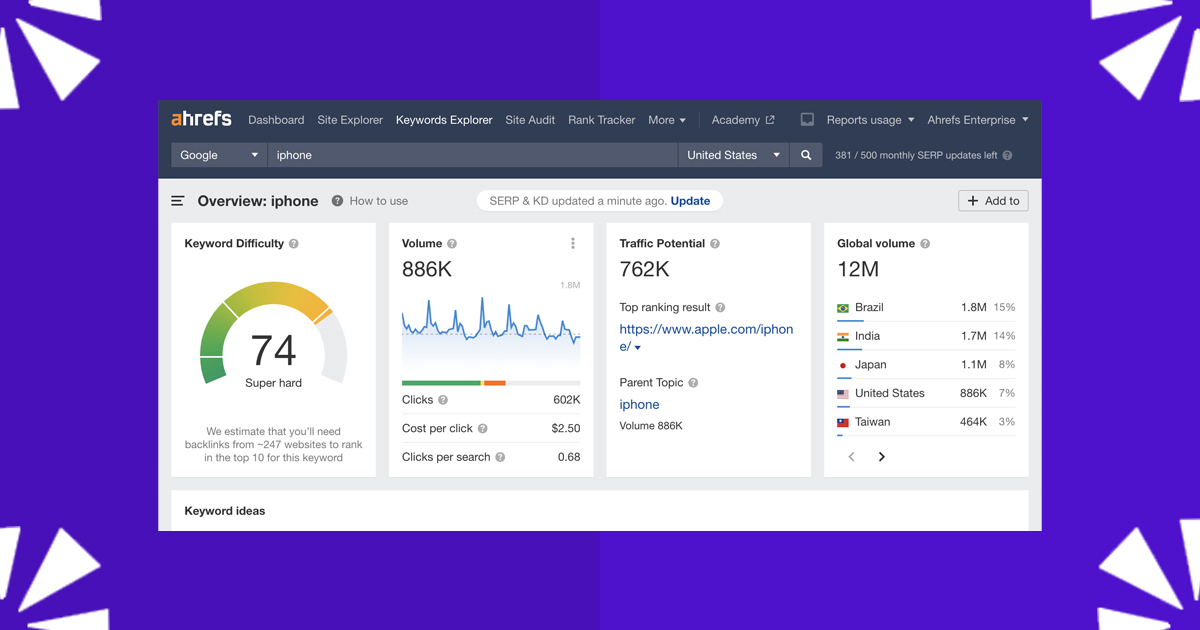
Benefit: Helps businesses beat local rivals.
Pro Tip: Track the top-ranked local pages of competitors for content ideas.
8. Uberall
Listing management, reputation monitoring, and an integrated platform for customer engagement are ideal for businesses. This location provides marketing automation, SEO audit reports, and review response tools.
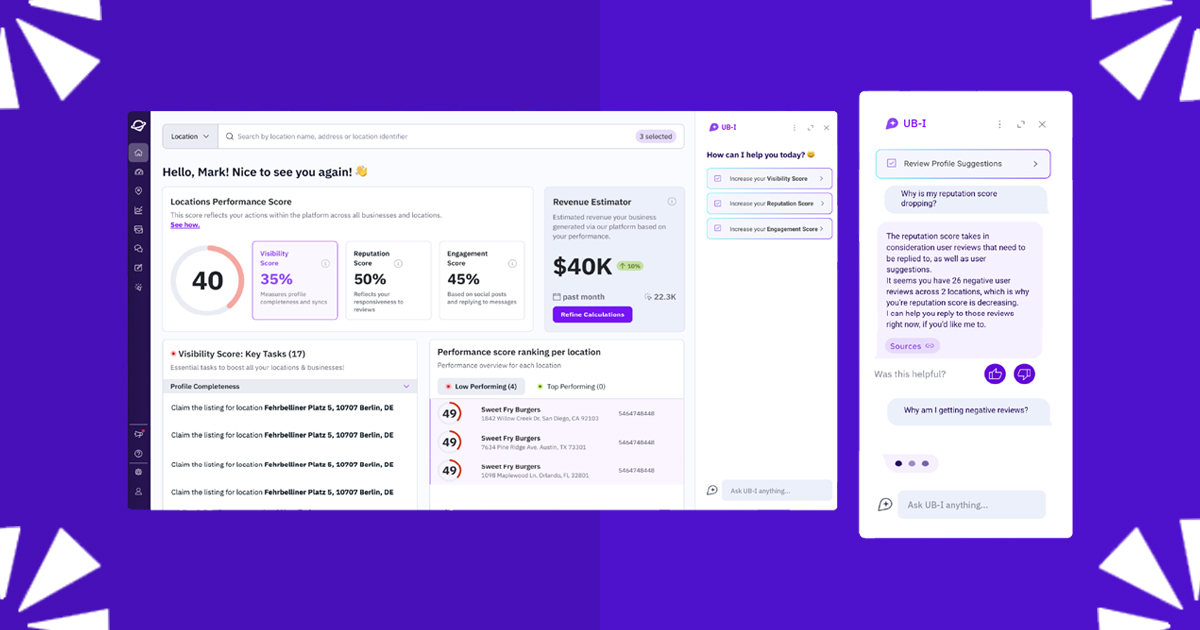
Benefit: Promotes engagement by tracking and managing reviews on the scale.
Pro Tip: Automate review requests after the service is completed.
9. GeoRanker
A geo-specific SEO tool that tracks ranking by city, zip or neighbourhood. It provides a heatmap to imagine local visibility, competitive tracking by region and citation tools.
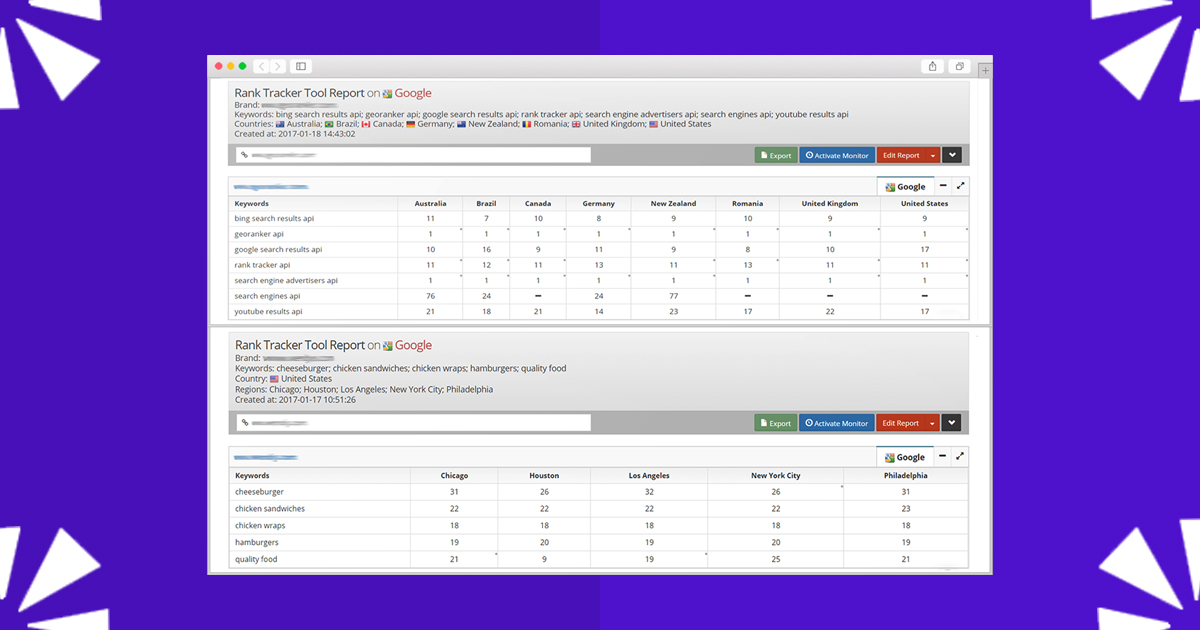
Benefit: Actually shows that you are strong or weak in local search.
Pro Tip: Use heatmaps to spot high and low-performing areas.
10. ReviewTrackers
A review of management tools that centralize the customer’s feedback from 100+ platforms. This provides sentiment analysis, automatic review requests, and response tools.
![]()
Benefit: Timely reviews increase trust and local ranking through management.
Pro Tip: Use the response template for speed, but personalise for authenticity.
11. Surfer Local
content and a local SEO tool for Google Business profile optimisation. It provides competitive analysis, geo-specific content guidance, and simple reports.
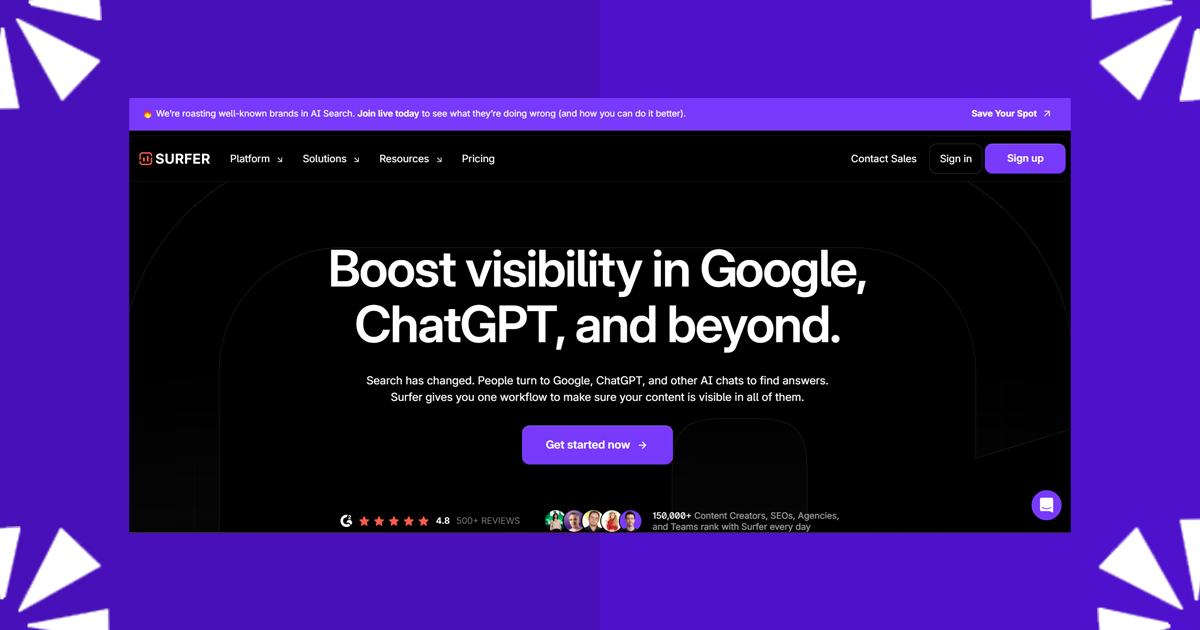
Benefit: Google Maps improves visibility and aligns content with local ranking factors.
Pro Tip: Optimise separate service pages for each city you serve.
12. Synup
Synup helps manage listings, monitor reviews, and track search performance.
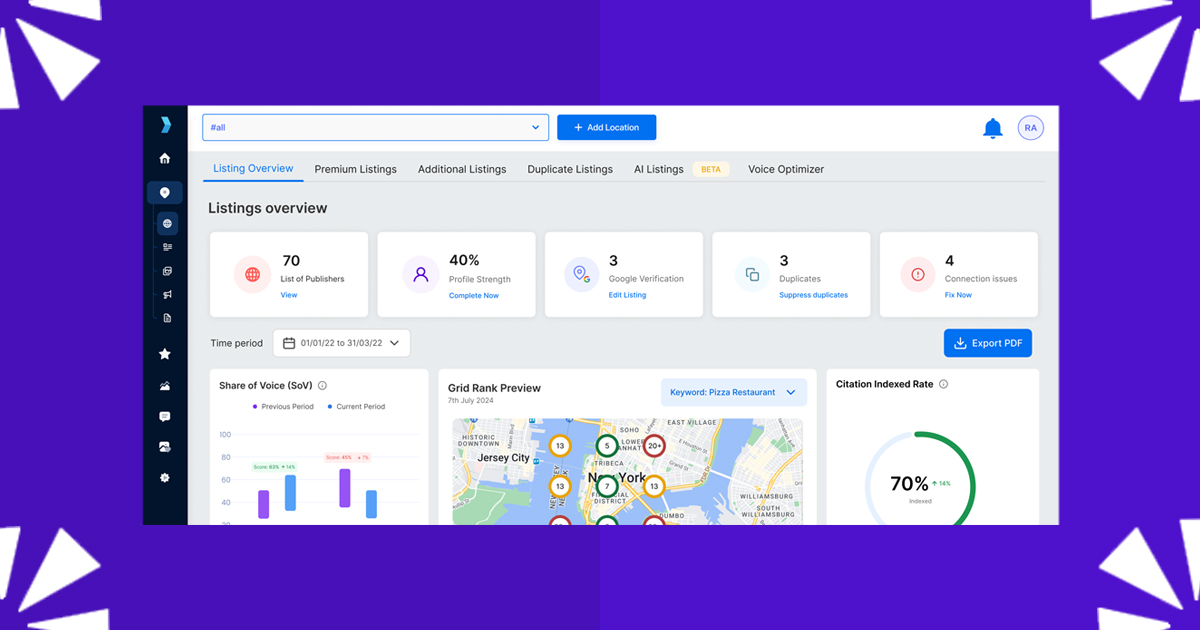
Benefit: Keeps your digital appearance consistent and visible.
Pro Tip: When your hours change, use Synup to schedule an automatic update on all platforms.
13. Local Falcon
This tool offers a visual grid that shows your Google Maps rankings in different locations.
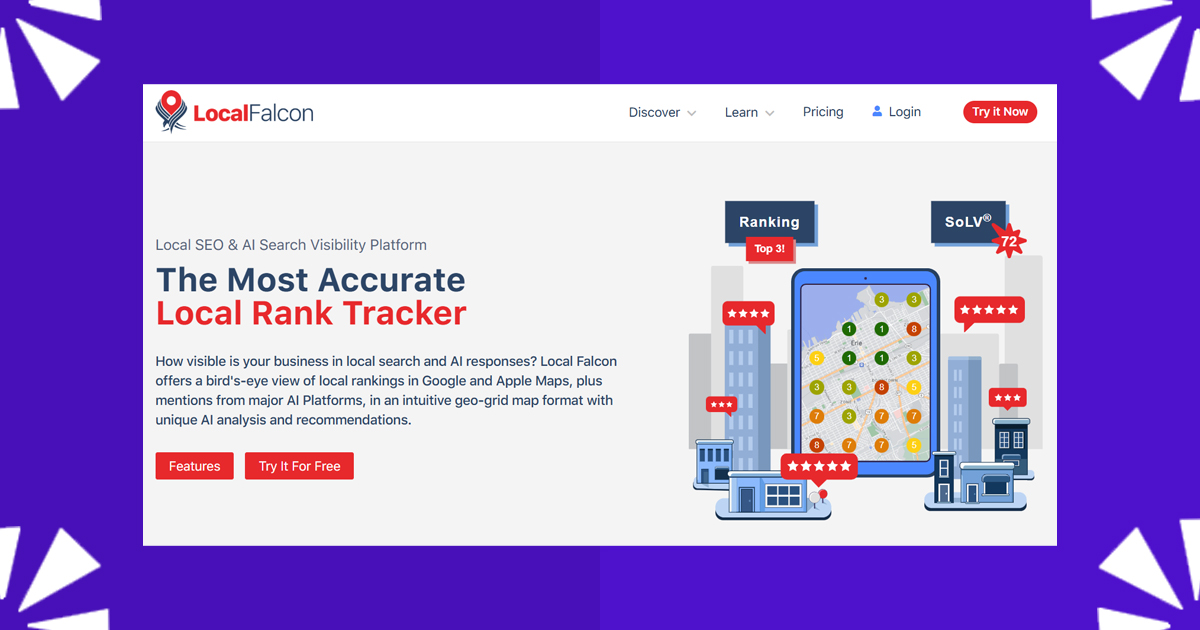
Benefit: Your map identifies gaps in visibility.
Pro Tip: Use local Falcon before advertising to see that organic visibility requires help.
14. CallRail
Track calls generated from local search campaigns.
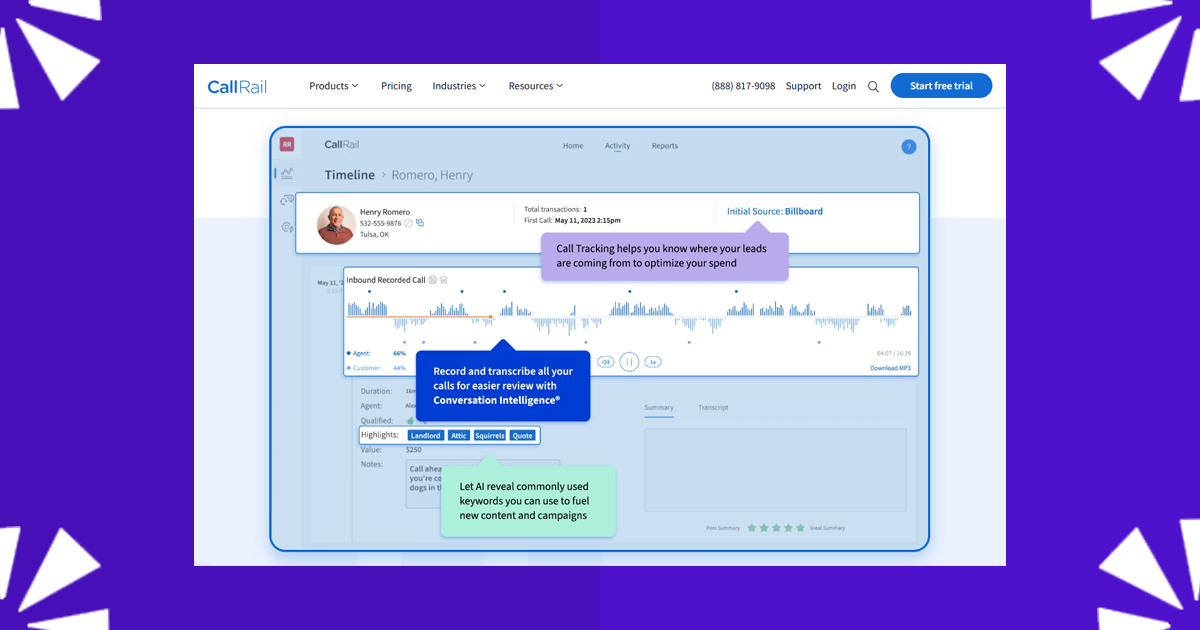
Benefit: Measure ROI to know which local keywords call.
Pro Tip: Use a dynamic number entry to track calls from various landing pages.
15. Screaming Frog SEO Spider
This auditing tool crawls your website to find technical SEO issues.
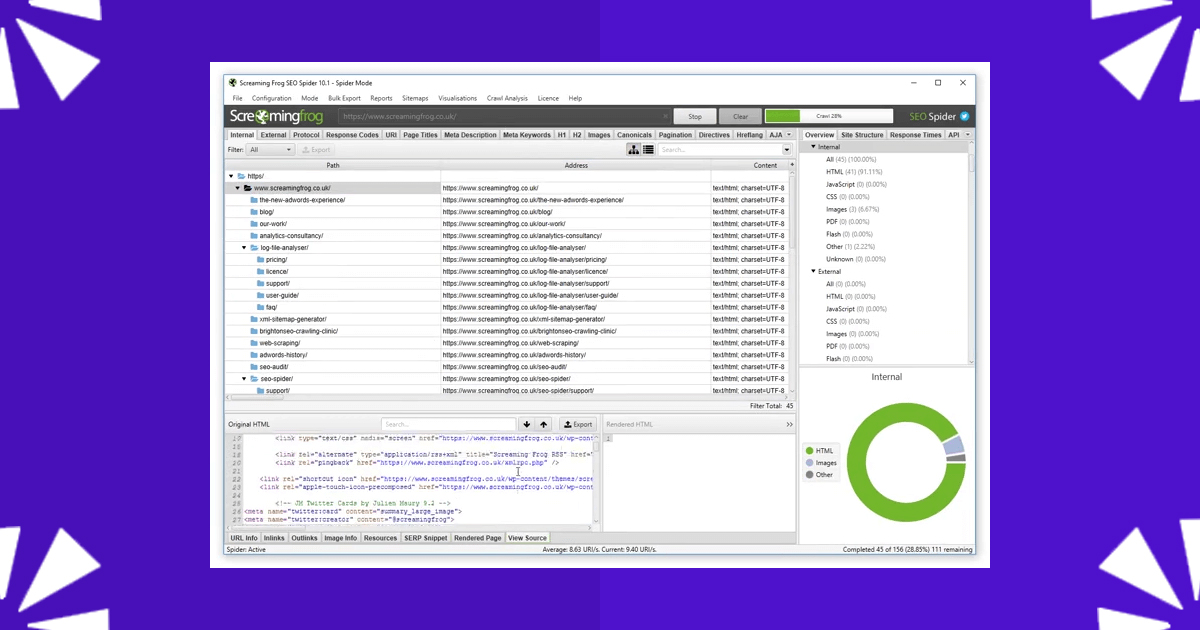
Benefit: This ensures that your site structure is adapted to the local search engine.
Pro Tip: Check for broken links and regularly missing meta details.
Tips to Maximise Local SEO Tools
- Keep NAP consistent – make sure the business name, address, and phone are the same everywhere.
- Leverage reviews – Encourage positive reviews, answer everyone (good or bad).
- Use local keywords – Add the names of the city/neighbourhood to the content and metadata.
- Create a location page – a unique page per service sector for better ranking.
- Track Competitors– Use Semrush/Ahrefs to see what is working for them.
- Focus on voice search-Target converted, long-tail query (“Now I have the best pizza open now”).
- Track and Report – Regularly monitor analytics and ranking (BrightLocal, local Falcon).
- Automate Tasks– Use the tool to update the listing, request reviews, and generate reports.
Step-by-Step Guide: Using Local SEO Tools to Drive More Traffic
Step 1 – Set the target and metrics
- Define success: Call, visit, booking.
- Track KPI: GBP view, click, call, local traffic, keyword ranking, review.
- Connect GA and GSC, Note Baseline Metrics.
Step 2 — Optimise Google Business Profile (GBP)
- Complete the claim, verified, and full profile (accurate nap, hour, categories, services, details).
- Add photos, posts (with UTM), and enable messages/booking.
- Tools: GBP dashboard, BrightLocal, Yext.
Step 3 — Local Keyword Research
- Focus on geo-modifiers + “near me” queries.
- Use Semrush, Ahrefs, GSC, and GBP Insights.
- Priority to high-intent terms(“emergency plumber [city]”).
Step 4 — On-Page Optimisation
- Add city/service keywords to the title, H1, Intro.
- Include nap + hour in crawlable HTML.
- Use Google Maps Embed and Schema (Local Business).
- Multi-location if create location page.
Step 5 — Technical SEO & Speed
- Mobile-friendly, sharp load time.
- Fix duplicate/thin pages, broken links.
- Valuable schema (rich result test).
Step 6 — Citations & Listings
- Audited and fixed NAP inconsistencies.
- Submit top/local directors (Google, Yelp, Bing, Chamber).
- Moz uses Local, Whitespark, and BrightLocal.
Step 7 — Reputation & Reviews
- Encourage happy customers to leave reviews.
- Answer all reviews (positive and negative).
- Monitor through GBP or tools (podium, BrightLocal).
Step 8 — Local Links & Content
- Create local guides/resources.
- Sponsoring events, partnering with local businesses.
- Use Ahrefs/Semrush for link gap analysis.
Step 9 — Track Rankings & ROI
- Use Brightlocal, Semrush, and Localfalcon for local rank tracking.
- Monitor GBP insights, calls, and form fills.
- Review weekly (GBP), monthly (traffic), quarterly (strategy).
Step 10 — Advanced Cases
- Service-area businesses → set service areas in GBP.
- Multi-location → Unique page + GBP for each.
- Add conversational FAQ with Voice Search → Schema.
How to Use These Tools Effectively for GBP Ranking
- Fix Listing Stability (citations/NAP): Use BrightLocal or Moz Local to correct incorrect/duplicate information in directories.
- Optimise the GBP profile: Complete all the fields, update photos, post offers/events, and use local keywords naturally.
- Track the local ranking: Use geo-grid tools (Semrush, local Viking) to monitor visibility in various city areas.
- Manage reviews: Ask customers for reviews, answer quickly, and use the tool to monitor platforms.
- Competitive Analysis: Study top competitors’ categories, reviews, keywords and citations, then improve them
- Set monitoring and alert: Inform about unauthorised editing, missing listing, or misinformation.
- Leverage local content: Publish local blogs, add schema, and use GBP Post/Q&A for engagement.
- Measure & Iterate: Track changes in rankings, clicks, and calls—adjust strategy based on results.
Key Features to Look for in a Local SEO Tool
- GBP management: update naps, hours, categories, photos and posts.
- Keywords and Competitive Research: Find local search rules and track competitors.
- Rank tracking: Monitor local packs and maps ranking by keywords and locations
- Citation Management: Keep the directory listing consistent; Fix the duplicates.
- 5. Review Management: Gather customer reviews, monitor and reply.
- Audits and Insights: Measure spot errors, unauthorised changes, and performance.
- Multi-Location Support: Manage many GBP listings efficiently.
- Reporting: Use the dashboard and alert to track progress and issues.
Benefits of Using Local SEO Tools
- Save time: automate listing, review and reporting.
- Improvement in visibility: High rank in Google Maps and local pack.
- Build Trust: Constant NAP details and strong reviews promote reliability.
- Promote conversion: local searchers are ready to buy – more calls, visits and sales.
- Track performance: Use analytics to see what works and use analytics to refine strategies.
- Gain a competitive edge: improve local businesses that do not use these tools.
Pro Tips for Boosting Local SEO in 2025
- Optimise for voice search with interactive keywords (where closest? “).
- Take advantage of AI Tools (such as Chat or Jasper) to generate beneficial local content.
- Use local landing pages for each location with unique content
- Encourage more reviews – Customers trust businesses with fresh, authentic feedback.
- Regularly track local keyword rankings to spot shifts in search trends.
- Create local backlinks by collaborating with nearby bloggers, newspapers, or chambers of commerce.
30/60/90 Day Action Plan (practical)
30 days
- Claim/verify GBP. Fix NAP on the site.
- Run a local audit (site, GBP, citations).
- Publish 1 customised location page and add schema.
60 days
- Create 10 citations, request 20 reviews, and fix technical issues from the audit.
- Start local content series (2-4 posts).
- Set rank tracking and call tracking.
90 days
- Outreach for local partnerships and link opportunities.
- Review metrics: What the scale is working (more posts, advertising, local PR).
- Continuous review response plan and GBP update.
Common Local SEO Pitfalls to Avoid
- Inconsistent NAP across directories.
- Keyword stuffing location name (unnatural).
- Using a single general location page for many areas.
- To ignore negative reviews or automatic generic reactions.
- To let photos get stale – refresh the quarterly.
Local SEO Tools Cheat-Sheet
- GBP (Google Business Profile) – Compulsory
- Google Analytics / Search Console – Compulsory
- PageSpeed Insights / Lighthouse – Speed and UX
- Brightlocal / Whitespark – Citation and local rank tracking
- Ahrefs / Semrush – Keyword + Backlink Research
- Screaming Frog – Technical Crawl
- GTMETRIX – Performance Check
- Podium / Trustpilot – Review Management
Final Local SEO Checklist (before you publish)
- GBP verified + fully filled
- NAP match in all major directories.
- Location page customized + schema added
- Mobile speed acceptable (<3s target)
- Review the generation and response plan.
- Rank tracking + analytics target set
- 90-day local content and outreach plan prepared.
Final Thoughts
In 2025, the local SEO is no longer optional – it is necessary. The right tools help businesses cut through competition, keep online information accurate, and ready-to-buy attract customers. Start with free solutions such as Google Business Profiles, then scale to powerful platforms such as BrightLocal, Mozlocal, Semrush, or Yext.
Combinations of tools for listing, review, competitive research, and rank tracking, such as voice search optimisation and local citations, enable any business, from small shops to franchises, can dominate local search, promote visibility, and drive real-world results like calls, visits, and sales.
FAQs
1. What is the best free local SEO tool for small businesses?
Google Business Profile (GBP) is the most important free tool. It directly affects how you show up in Google Maps and local search results.
2. Do I need paid tools for local SEO?
Free tools like GBP cover the basics, but paid tools (BrightLocal, Moz Local, Semrush, Yext) save time, improve accuracy, and provide deeper insights.
3. How long does it take to see results from local SEO?
Usually, 2–3 months for noticeable improvements, but consistent optimisation brings stronger long-term growth.
4. How often should I update my business listings?
Update whenever your details change (hours, address, phone, services). Regular monthly or quarterly checks keep your info accurate.
5. Can small businesses really compete with big brands in local SEO?
Yes! Local SEO levels the field. By optimising your GBP, collecting reviews, and using the right tools, small businesses can outrank larger competitors locally.

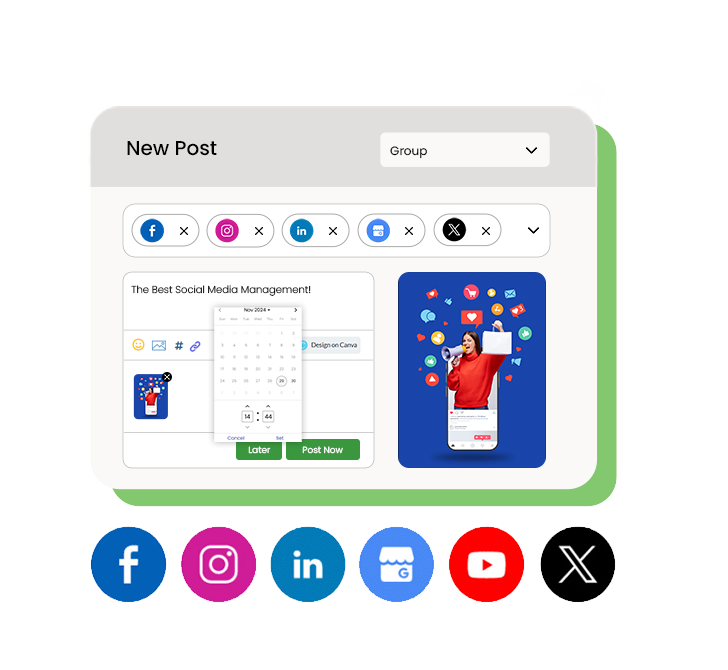

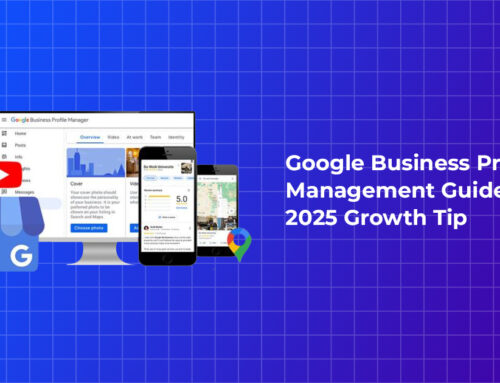

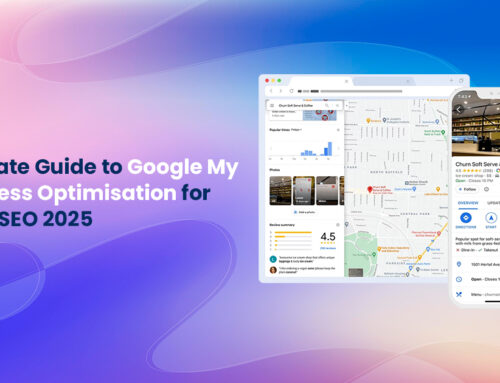

Thank you for this comprehensive guide on top local SEO tools for 2025. The emphasis on optimizing Google Business Profiles, managing reviews, and leveraging AI-driven insights is crucial for small businesses aiming to enhance their local search visibility. Tools like BrightLocal, Whitespark, and Semrush offer valuable features to streamline these processes.
For entrepreneurs looking to further strengthen their online presence, platforms like Topiko provide additional resources to create digital profiles, manage storefronts, and connect with customers effectively.